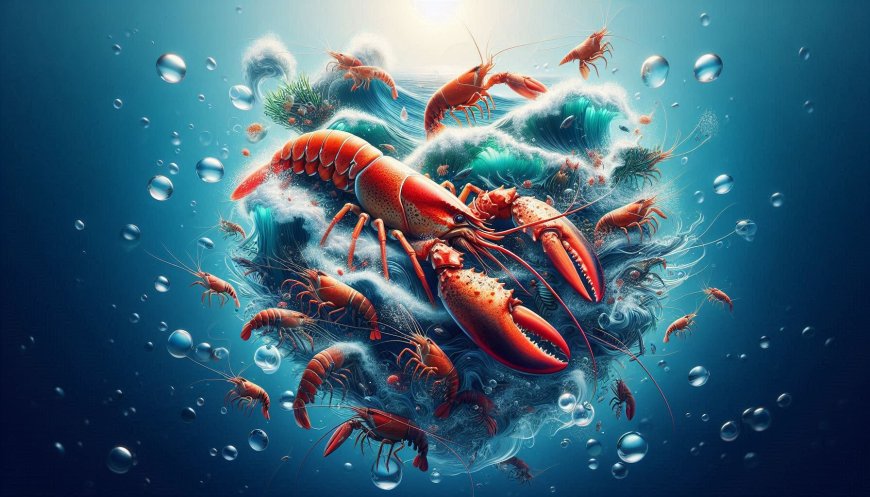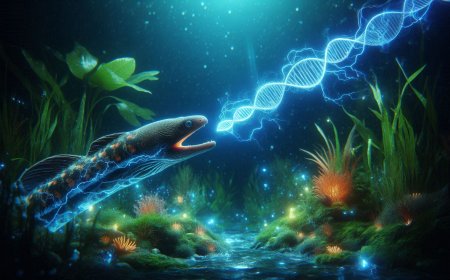The Ageless Wonders of the Sea: How Lobsters Defy the Aging Process
Discover how lobsters defy aging with the help of telomerase, an enzyme that maintains their DNA, fertility, and vitality throughout life. Explore the science behind their potential biological immortality.

In the hidden depths of the ocean, where pressure is high and light is scarce, one of nature’s most intriguing mysteries quietly roams the seabed: the lobster. These crustaceans are more than just a delicacy on dinner plates—they're biological anomalies that challenge everything we thought we knew about aging.
Unlike most animals, lobsters do not exhibit typical signs of aging. They don’t slow down, become infertile, or suffer from a natural decline in bodily functions as they grow older. In fact, they continue to grow, reproduce, and maintain robust health well into advanced ages, some even believed to be over a hundred years old. The secret to their apparent biological immortality lies in a powerful enzyme called telomerase.
The Role of Telomerase: Guardian of Genetic Youth
To understand the lobster’s secret, we must first explore what telomerase is and why it matters.
At the end of every strand of DNA are protective caps known as telomeres—think of them as the plastic tips at the end of shoelaces. Every time a cell divides, these telomeres shorten slightly. Eventually, they become too short to protect the DNA, leading to cellular aging and malfunction—a process known as senescence.
In most animals, telomerase—the enzyme that rebuilds these telomeres—is only active in early development or in certain cell types like stem cells. In humans, for instance, telomerase activity slows down significantly with age, contributing to wrinkles, weakened immunity, and declining fertility.
But lobsters flip this script entirely.
They continuously produce telomerase in most of their cells throughout their lives. This means their telomeres stay long and healthy, allowing cells to keep dividing without the typical age-related damage. It’s a bit like having a built-in anti-aging mechanism that works 24/7, forever pressing the "reset" button on their biological clock.
Ageless Bodies, Fertile Lives
Thanks to telomerase, lobsters don’t just live longer—they live better. Even older lobsters exhibit no decline in appetite, strength, or reproduction. In fact, larger and older lobsters are often more fertile than their younger counterparts, producing more offspring and engaging in vigorous courtship rituals.
Their immune systems remain effective, their limbs stay strong (and regrow when lost), and they keep molting—a process that allows them to grow and even rejuvenate damaged tissue.
Molting is no small feat. It involves shedding their exoskeleton and forming a new one, a task that requires immense energy and precise biological coordination. While it becomes riskier with age due to their increasing size, lobsters continue to do it well into advanced years.
So, Are Lobsters Truly Immortal?
Not quite.
While lobsters have mastered the art of cellular maintenance, they are not immune to death. They can fall prey to predators, disease, and environmental changes. And ironically, their ability to grow indefinitely may also contribute to their eventual demise.
As lobsters get larger, molting becomes more taxing and dangerous. Older lobsters may die during the molting process itself, simply because their bodies can no longer sustain the immense energy and physical strain required to shed their increasingly bulky shells.
Moreover, diseases can still take their toll. Shell disease, a bacterial infection, is one example that affects lobsters regardless of their telomerase production. So while lobsters might not "age" in the conventional sense, they are not invincible.
Implications for Science and Longevity Research
Lobsters have sparked significant interest in scientific communities studying aging and longevity. If we can better understand how telomerase works in lobsters—particularly how they manage to avoid cancer despite their high cell turnover—it could open doors to new therapies for humans.
Telomerase has already been linked to potential anti-aging treatments and cancer research. However, in humans, excessive telomerase activity is also associated with tumor growth. Lobsters somehow balance this enzyme’s activity without developing rampant cancers, a puzzle that remains unsolved and highly compelling.
By studying how lobsters navigate this balance, scientists hope to uncover clues that could lead to breakthroughs in regenerative medicine, age-related diseases, and even lifespan extension.
Conclusion: Nature’s Timeless Marvels
Lobsters are a fascinating example of how diverse and surprising life can be. In a world where aging is seen as an inevitable decline, these crustaceans offer a glimpse into an alternative biological path—one where time does not erode vitality, and life continues to thrive without the usual toll of age.
While we may never become biologically immortal like lobsters seem to flirt with, their existence reminds us that nature often holds the key to secrets we’ve yet to unlock. In their silent, steady march across the ocean floor, lobsters just might be showing us the future of longevity—one telomere at a time.
What's Your Reaction?







































































































